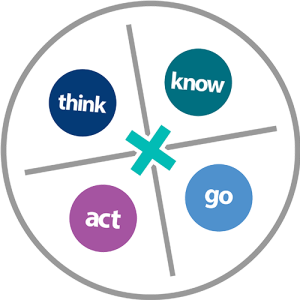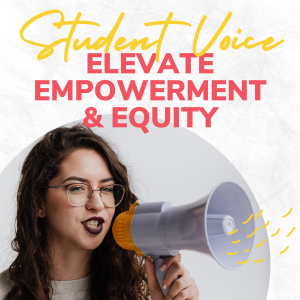[vc_row][vc_column][vc_column_text]Over the past couple of years, we’ve had the opportunity to work with schools not just in our area, but also around the world. Through a number of research and consulting projects, we visited schools and spoke with educators about how they prepare students to be ready for life after high school. While each school has a unique context and culture with different challenges and resources that impact its approach to readiness, we’ve observed that these schools also have a lot in common. As we partner with educators, we enjoy taking the opportunity to share applicable lessons and successes we’ve seen. Below are a handful of observations from Inflexion staff during school visits around the world.[/vc_column_text][vc_single_image image=”44047″ img_size=”full” alignment=”center” onclick=”link_image” css_animation=”slideInLeft”][ultimate_spacer height=”24″][/vc_column][/vc_row][vc_row][vc_column width=”1/4″][vc_single_image image=”44049″ img_size=”medium” alignment=”center” onclick=”custom_link” image_hovers=”false” link=”https://inflexion.org/team/michael-thier/”][/vc_column][vc_column width=”3/4″][vc_column_text]
Michael Thier: Manila, Philippines; Singapore; Guayaquil, Ecuador
The student bodies of international schools usually feature tremendous diversity of languages, nationalities, religions, and lived experiences. Similar to many American private schools, the socioeconomic statuses of the families who send their children to international schools is often quite high, surrounding these schools with some degree of elitism.[/vc_column_text][/vc_column][/vc_row][vc_row][vc_column][vc_column_text]Many of these schools create scholarship networks for students in need of financial assistance, but the majority of international schools’ student populations are from very well-resourced families. Importantly though, international schools can be fascinating incubators of innovation. The considerable resources they can marshal enable the development or application of all sorts of promising practices that resource-strapped schools (i.e., those that receive public/government funding) cannot. Consequently, at Inflexion, we’ve tasked ourselves with helping all schools, regardless of their level of resources. Our aim is to help traditional public schools leaders, educators, and students learn applicable lessons from international schools or other successful school types that they may not cross paths with.[/vc_column_text][ultimate_spacer height=”24″][/vc_column][/vc_row][vc_row][vc_column width=”1/4″][vc_single_image image=”44050″ img_size=”medium” alignment=”center” onclick=”custom_link” image_hovers=”false” link=”https://inflexion.org/team/jandee-todd/”][/vc_column][vc_column width=”3/4″][vc_column_text]
Jandee Todd: Singapore; Palmares, Costa Rica; Merced, California; Santa Ana, California; Anaheim, California
At one school I visited, a group of teachers meets weekly for 2.5 hours to discuss individual students they have concerns with, ranging from quite minor (e.g., calling in sick so they could see exchange students off at the airport, chatting in class) to very serious (e.g., a woman trying to balance motherhood and school, a student dealing with the abandonment of his father).[/vc_column_text][/vc_column][/vc_row][vc_row][vc_column][vc_column_text]The teachers search for solutions and make each other aware of things to look out for—they don’t complain. I hadn’t ever before seen teachers given (or take) that amount of time to focus on individual students, and I think that having that time together made them feel and act more like a team. I think they felt less isolated and more empowered to properly support students.[/vc_column_text][ultimate_spacer height=”24″][/vc_column][/vc_row][vc_row][vc_column width=”1/4″][vc_single_image image=”44051″ img_size=”medium” alignment=”center” onclick=”custom_link” img_link_target=”_blank” image_hovers=”false” link=”https://inflexion.org/team/paul-beach/”][/vc_column][vc_column width=”3/4″][vc_column_text]
Paul Beach: Melbourne and Perth, Australia; Anaheim and San Diego, California; Eugene and Springfield, Oregon
Almost all schools in United States face the challenge of measuring noncognitive skills. This is especially problematic since almost all schools value these skills and because large-scale accountability systems continue to value (and therefore force schools to value) only a narrow set of discrete core academic knowledge and skills.[/vc_column_text][/vc_column][/vc_row][vc_row][vc_column][vc_column_text]Most educators in the United States associate this problem with high-stakes accountability systems that rely disproportionately on standardized test scores to define school quality. What surprised me on my first visit to Australia was that Australian educators are faced with the same problem through the National Assessment Program – Literacy and Numeracy (NAPLAN) and the My School website. That is, NAPLAN appears to dominate discussions of school quality in Australia. This is not just an American and Australian problem. Large-scale standardized tests are used to evaluate school quality in many countries across the world and used to rank countries in some cases (e.g., the Programme for International Student Assessment). This becomes important because relying so heavily on standardized tests to define school quality draws attention away from other knowledge and skills associated with college and career readiness. Seeing first-hand how this is an international issue continues to make me wonder what changes to macro-level policy can lead to both policymakers and educators to value the whole child rather than a cut score on a standardized test.[/vc_column_text][ultimate_spacer height=”24″][/vc_column][/vc_row][vc_row][vc_column width=”1/4″][vc_single_image image=”44052″ img_size=”medium” alignment=”center” onclick=”custom_link” img_link_target=”_blank” image_hovers=”false” link=”https://inflexion.org/team/ross-anderson/”][/vc_column][vc_column width=”3/4″][vc_column_text]
Ross Anderson: Honolulu and Honoka’a, Hawaii; San Diego, CA; Springfield, Eugene, and Junction City, Oregon
In the past year, I have visited urban high schools in Springfield, OR, San Diego, CA (right near the border with Mexico), and Honolulu, HI. I also visited a rural Native Hawaiian culture and language school in a rural community on the Big Island in Hawaii. Across those schools, teachers and leaders were concerned about the same underlying need that all of their student bring to their learning—the need for a sense of belonging, relevance, and agency in what and how they learn.[/vc_column_text][/vc_column][/vc_row][vc_row][vc_column][vc_column_text]These particular schools each respond to that need through the cultural and creative assets unique to the community of learners. And they also support and develop their teachers in the way that they hope their teachers will support and develop their students. For instance, every morning school begins at Kanu o ka ‘Āina in Hawaii through a ritual that draws on Native Hawaiian language and traditions. Students and teachers create a formation to ask and grant permission to teach and learn. The sense of identity and belonging is palpable. Though these sites represent very different cultural traditions and norms, the underlying aims and identity of their school share more similarities than differences.[/vc_column_text][ultimate_spacer height=”24″][/vc_column][/vc_row][vc_row][vc_column width=”1/4″][vc_single_image image=”44053″ img_size=”medium” alignment=”center” onclick=”custom_link” image_hovers=”false” link=”https://inflexion.org/team/kristine-chadwick/”][/vc_column][vc_column width=”3/4″][vc_column_text]
Kristine Chadwick: Berlin, Germany; Turin, Italy; Surrey, British Columbia, Canada
All of the schools I visited performed very well academically and were highly focused on building students’ cognitive and metacognitive skills, and nurturing a sense of self-direction in them. There was a definite sense of pride in all schools that they were preparing students to be successful in life, not just college or career.[/vc_column_text][/vc_column][/vc_row][vc_row][vc_column][vc_column_text]Despite struggling to maintain a consistent, coherent set of structures and instructional programs in the face of external pressures and demands (e.g., from their national or regional governments), they seemed to strive to maintain stability for their students despite these outside forces, and managing change was a constant process.[/vc_column_text][/vc_column][/vc_row]




